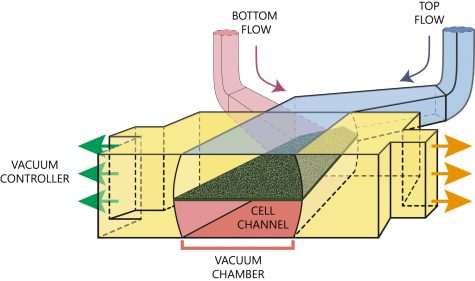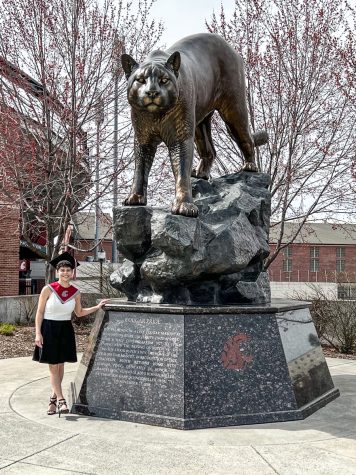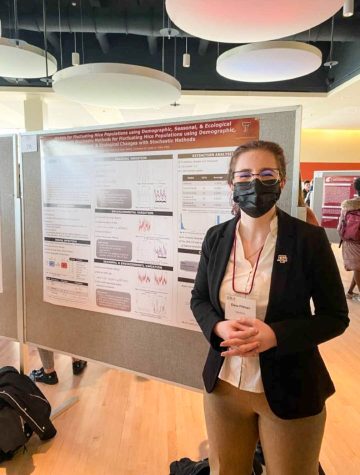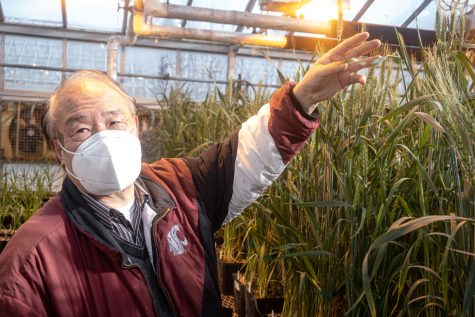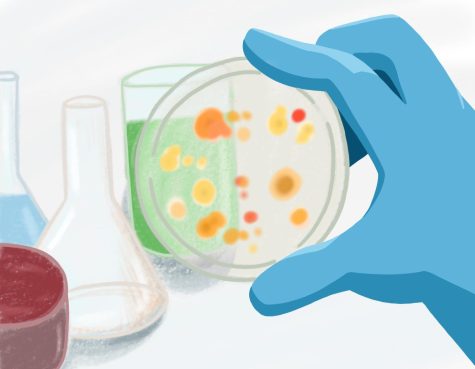WSU researchers link gallic acid, stretching to reduction in arthritis inflammation
Early results promising; potential for cartilage implants being explored
Osteoarthritis is a degenerative disease, but lab results indicate stretching and antioxidants help.
January 20, 2022
A WSU research team examined the effects of gallic acid in combination with stretching mechanisms on human cartilage cells from arthritic knees to mimic the stretching from walking. The results found both decreased arthritis inflammation in early results.
Osteoarthritis is a degenerative disease that degrades cartilage tissues, said Terreill Robertson II, doctoral student in chemical engineering.
“You have these native properties of cartilage that’s supposed to have these functions,” Robertson said. “But once it becomes a disease state, those functionalities of cartilage … are not as healthy. It’s not robust.”
Osteoarthritis is the most common musculoskeletal disorder and affects more than half of the population above 75 years old, according to the study published by the researchers.
Gallic acid, found in gallnuts and green tea, is an antioxidant — or nutraceutical compound — along with vitamins E and C to reduce inflammation. It is the strongest antioxidant among others, according to the study.
With osteoarthritis, there are reactive oxygen species present in diseased cartilage and cause increased cell death. This causes cartilage to become inflamed, Robertson said.
The antioxidant properties of gallic acid serve as scavengers and neutralize the free radicals present in the diseased tissue, he said.
“What we’re trying to do is understand whether these oxygen scavengers, or antioxidants, help to support healthy cartilage or reverse osteoarthritis,” said Bernard Van Wie, WSU professor in the Voiland School of Chemical Engineering and Bioengineering and principal investigator of the study.
Gallic acid and stretching both had positive impacts in the study, but the sum of the two methods had a synergistic impact, Van Wie said.
“So, how do you put that into practice? We don’t know for sure,” he said.
One potential direction of the research is to see if it is possible to make healthier cartilage in the lab. By making healthier cartilage, it could be possible to implant it into a knee with a cartilage hole or lesion, Van Wie said.
“That’s called tissue engineering, and that’s what we’re working on in our lab,” he said.
Despite the positive results, it is important to note that gallic acid is not a miracle cure and that any potentiality of a prescribed antioxidant should be left up to the medical community, Van Wie said.
“One of the big issues is can that antioxidant, once it’s digested, stay in the same form?” he said. “Does it migrate to the right place through the bloodstream, [is it] going to get out of the bloodstream into the joints and cause the cells to be in a more healthy environment? That is a very tall order.”
Van Wie said if researchers can understand what is happening at the molecular level to make cartilage better, there is possibly a way to reproduce it. This could include a drug or injection into the knee joint that can cause cartilage to regenerate.
“We’re trying to understand what we call mechanisms: what’s happening molecule to molecule inside the surface of the cell that makes things happen,” he said. “And maybe by understanding that, we can reproduce it in other ways.”








